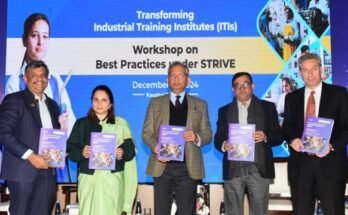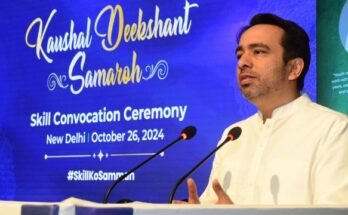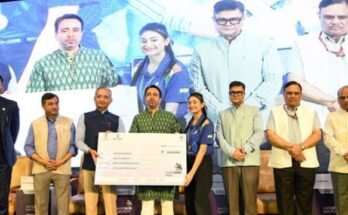New Delhi: When Rajiv Pratap Rudy became the first skill development minister of India in November 2014, everyone—experts, media, the ruling alliance and skill companies—were ecstatic. The first of its kind ministry had a big target and the backing of Prime Minister Narendra Modi.
Almost three years on, Rudy’s been replaced—and it’s chaos. The targets are missing as much as the jobs for those who have been trained. The key skills body National Skill Development Corporation (NSDC) is in the middle of nowhere, its top executives removed, its powers curtailed and its initials loans have turned bad.
Clearly, the new skills minister Dharmendra Pradhan and his new deputy Ananth Kumar Hegde have their work cut out. The big question is, can they deliver by the time the next general election comes along in 2019?
Petroleum minister Pradhan who has been elevated for his performance and given full charge of the skills ministry will have will have three key tasks at hand: accelerate the pace of skill development to achieve targets; bring jobs to the trainees; and put the whole skill eco-system in order.
“From PM downwards the skill mission is a clear priority. But where they are lagging is implementation on the ground. The new minister will have his plate full from day one,” said Tahsin Zahid, chairman, skill development committee at industry lobby group PHD Chamber of Commerce and Industry.
“We in Industry feel that despite funds and the intent, clarity in implementation was missing. If they wish to see impact before 2019, they need to put one system from day one and try their best to execute it without changing too many things every other month. That destabilizes the system and it has happened in past,” Zahid said.
To be sure, one cannot blame Rudy and the skills ministry entirely as 22 departments and ministries are involved in the Skill India mission creating a complex situation for a three-year-old ministry which has to build everything from scratch.
Besides, NSDC, the key skills funding and implementing body, does not have the capability to do everything. For example, the STAR (Standard Training Assessment and Reward) scheme that introduced a monetary incentive system for those willing to get trained was a failure, as was the Pradhan Mantri Kaushal Vikas Yojana (PMKVY), a pet project of Modi. The PMKVY-2 which was announced in 2016, has also lagged behind targets as well finding jobs for those trained.
NSDC was in charge of the STAR and PMKVY-1 and its now implementing the PMKVY-2.
According to the PMKVY website, in 2016-17 NSDC trained 557,000 people but placed only 63,000 in jobs—a success rate of less than 12%, against a requirement of 70%.
On 9 August, the ministry told Lok Sabha that as of 31 July 2017, a total of 290,000 candidates had been given placement offers (not necessarily placed). Although the exact data on how many people were trained up to 31 July is not available immediately—a training target of around 1.8 million has been set in total for 2016-17 and 2017-18 and an overall training target of 10 million for 2020.
“If you look at the record of NSDC, much of the previous lending which it did is becoming NPA. It doesn’t have a robust system. Thank the prime minister that he created this ministry to take control of the processes and the use of government money. Now, we have been able to control the process but lot of the damage has been done,” Rudy had told Mint in an interview in May.
The ministry is now looking to strip NSDC from skill implementing responsibilities, Mint reported on 30 August. “NSDC role should only be funding, instead for programs like PMKVY, they need to have a separate department and all should report to National Skill Development Agency (NSDA),” said Zahid.
Once powerful, NSDA has been defunct for the last several months. Its chairman S. Ramadorai resigned last November and there were no full-time director generals for almost two years until last week when a new DG was appointed.
Note: News shared for public awareness with reference from the information provided at online news portals.



